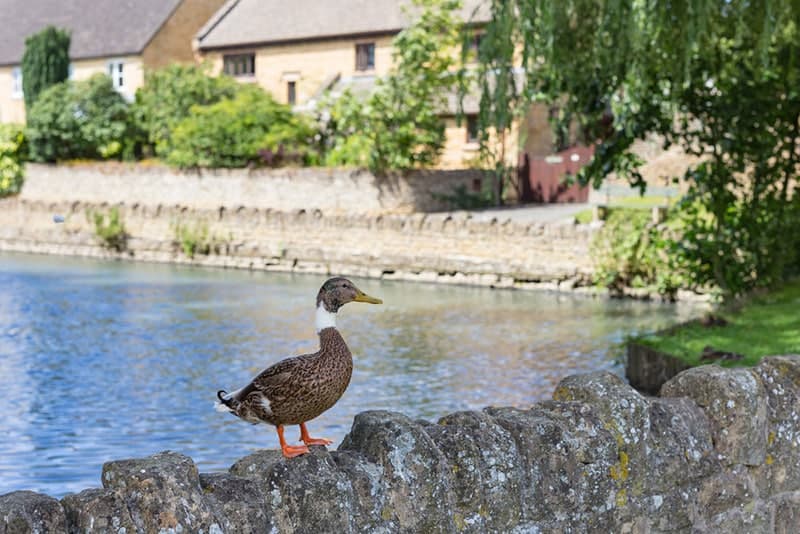The Abacot Ranger duck had its origins in England in the early 1900s and was bred primarily for its eggs and meat. It’s also known as the Hooded Ranger in North America, the Streicherente in Germany, and Le Canard Streicher in France. It’s considered a lightweight duck that has become more popular for exhibition today.
If you’re interested in learning more about this duck breed, here, we go over its characteristics and other basic information.
 Quick Facts About the Abacot Ranger Duck
Quick Facts About the Abacot Ranger Duck
| Breed Name: | Abacot Ranger |
| Place of Origin: | England |
| Uses: | Eggs and meat |
| Drake (Male) Weight: | 6–6.6 lbs. |
| Duck (Female) Weight: | 5.5 lbs. |
| Drake Color: | White and brown body with black/dark green head |
| Duck Color: | White with brown body and brown head |
| Lifespan: | Up to 10+ years |
| Climate Tolerance: | All climates |
| Care Level: | Easy |
| Production: | High egg productivity |
| Broodiness: | Frequent |
Abacot Ranger Duck Origins
Oscar Grey is responsible for the development of the Abacot Ranger duck. He named the duck after his “ranch,” which was located in Friday Wood near Colchester, Essex, in Eastern England.
Between 1917 and 1922, he used a combination of two different duck breeds — the White Indian Runner and the Khaki Campbell — to create the new Abacot Ranger.
While the Abacot Ranger ended up being a good bird for its meat and eggs, it lost popularity in the U.K. However, Herr Lieker of Germany took an interest in revitalizing the duck and essentially brought the breed back from near extinction.
The Abacot Ranger did well in Germany and eventually came back to the U.K. in the 1970s and ‘80s, where it was accepted into the British Waterfowl Standard in 1983.


Abacot Ranger Duck Characteristics
Abacot Ranger ducks are easy to care for and are quite peaceful and friendly. They are easy to train and domesticate and can easily become tame.
They are hardy and long-lived, and with proper care, they can live for as long as 10 years or more.
Abacot Rangers aren’t strong flyers even though they are lightweight ducks, so they can easily be kept in areas with low fences as long as they have the right kind of protection from predators. When they do fly, it’s usually short distances or to give them a little boost when they want to get away quickly.
Part of their name, “ranger,” comes from their excellent ability to forage for themselves. They are quite capable of eating plants, insects, and grubs within their range, which can help keep your feed costs low. They can be allowed to roam freely to have access for foraging, and they generally stay busy.
Uses
The Abacot Ranger duck is a dual-purpose breed because it’s raised primarily for its meat and eggs.
They are light yet stocky, making them good meat birds. They are quite prolific egg layers because they are capable of laying 180 to 200 eggs every year.
Due to their friendly natures, they can also make excellent pets, and their striking also makes them great to use for exhibition.

Appearance & Varieties
Abacot Rangers are medium-sized, with the males, or drakes, roughly 6–6 ½ pounds, and the female ducks 5 ½ pounds.
The drakes have black feathers on their heads, with a beautiful iridescent green sheen. There’s a white ring around their necks that definitively separates their head feathers from those of their bodies, which are white and cream and marked with different colors. Drakes also have olive-green bills and orange legs, and the females have fawn-colored heads and creamy white bodies speckled with various patterns in browns. Females also have slate gray bills and gray legs.
Population/Habitat
While they have gained in popularity in recent times, particularly in Europe, the Abacot Ranger is quite rare in North America. They are also not recognized by the American Poultry Association.
In fact, these ducks are just rare in general. They made the Rare Breeds Survival Trust Watchlist as being at risk.
Their habitat is no different from that of most other ducks. Abacot Rangers prefer being near a body of water and natural grasslands. As long as they can forage and have a place to bathe, they are easy to look after.
 Are Abacot Ranger Ducks Good for Small-Scale Farming?
Are Abacot Ranger Ducks Good for Small-Scale Farming?
Abacot Ranger ducks are great for small scale-farming. However, it might be difficult to get your hands on one of these ducks, particularly in North America.
Abacot Ranger ducks do well in most climates because they are quite hardy, and they tend to be friendly and docile. If you can manage to find one, these beautiful ducks are worth the search!
Bird related reads:
Featured Image Credit: garmoncheg, Shutterstock
